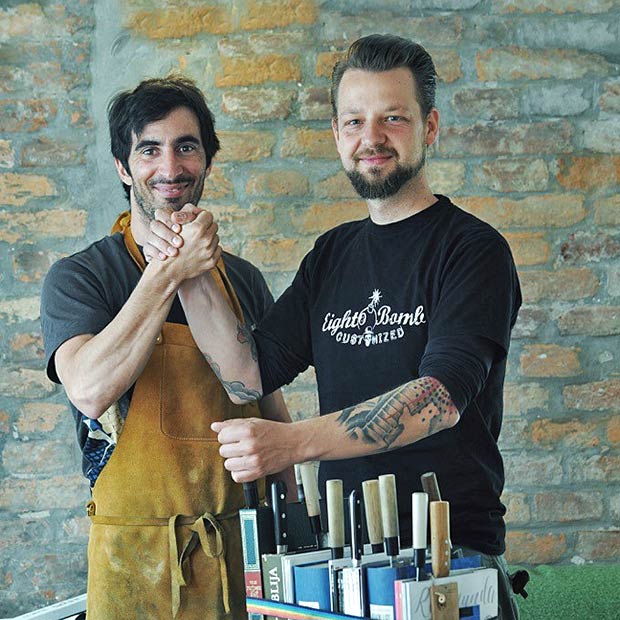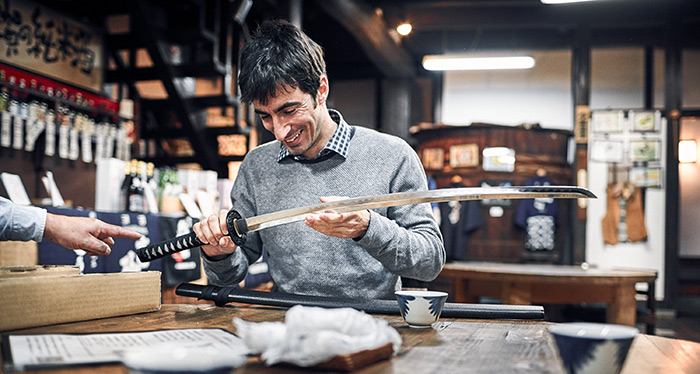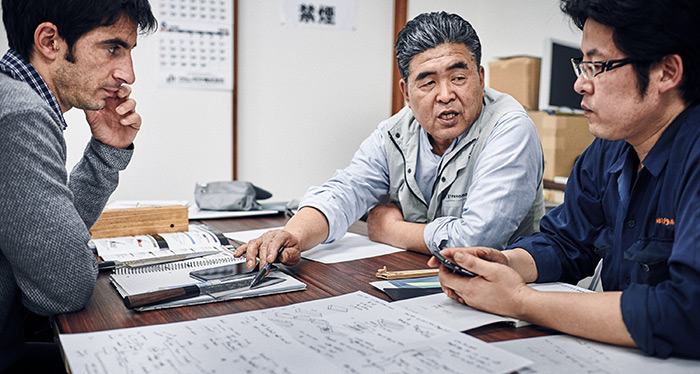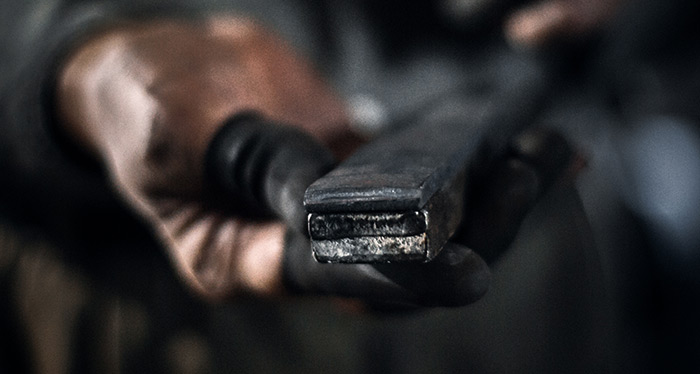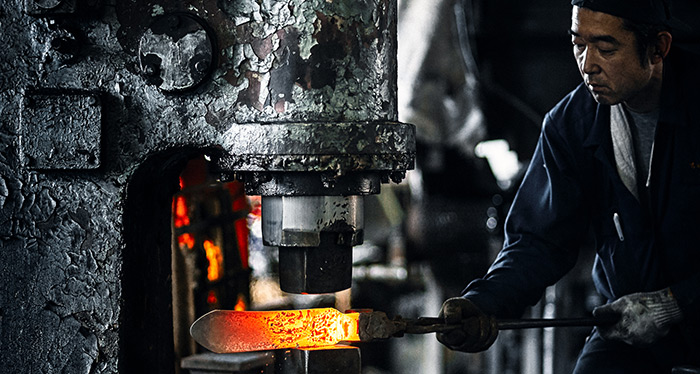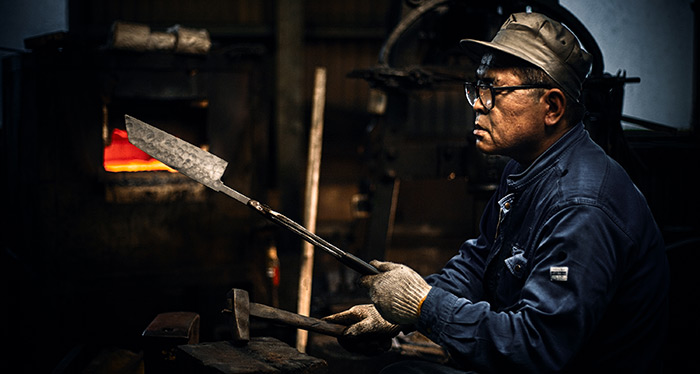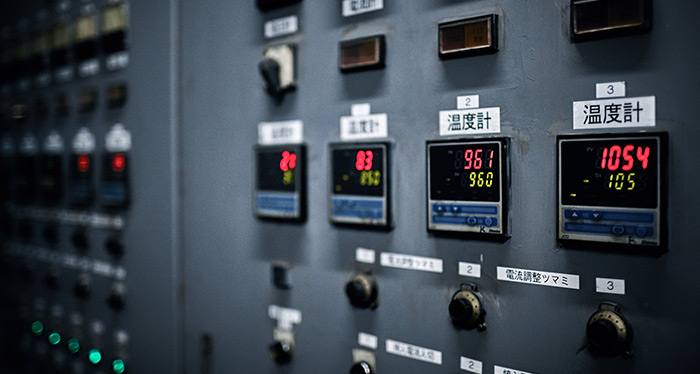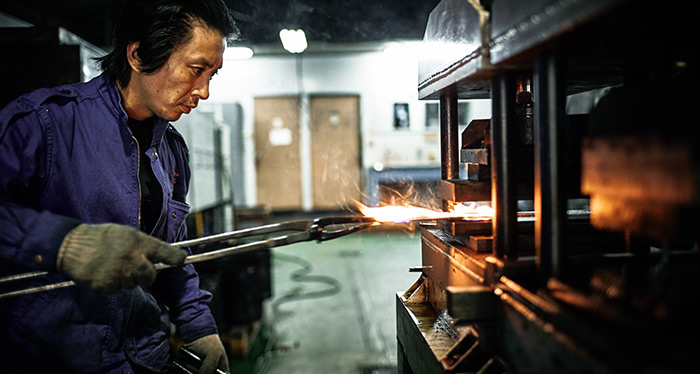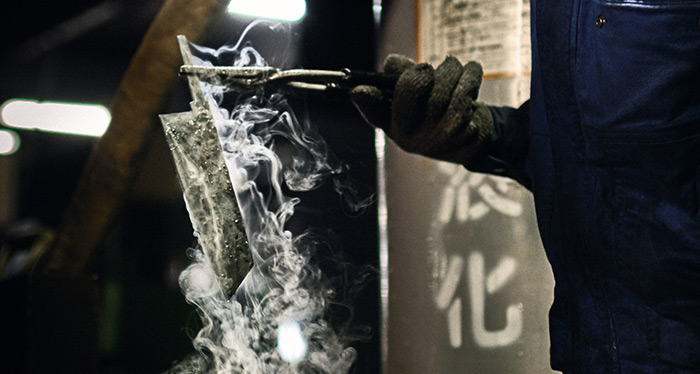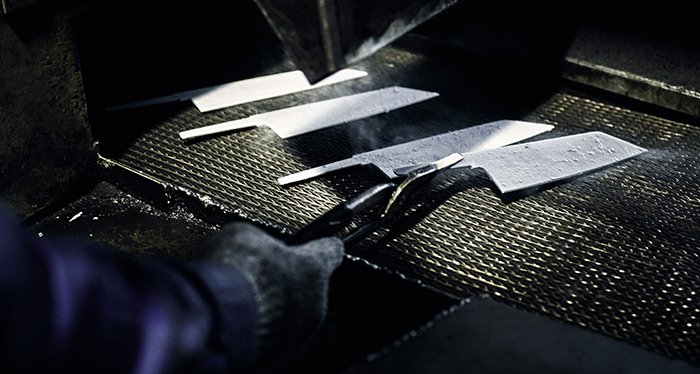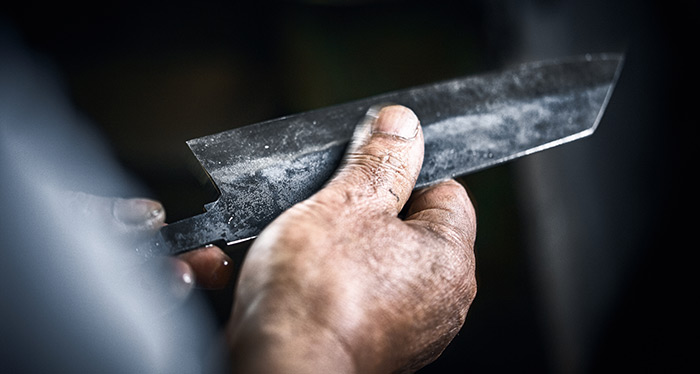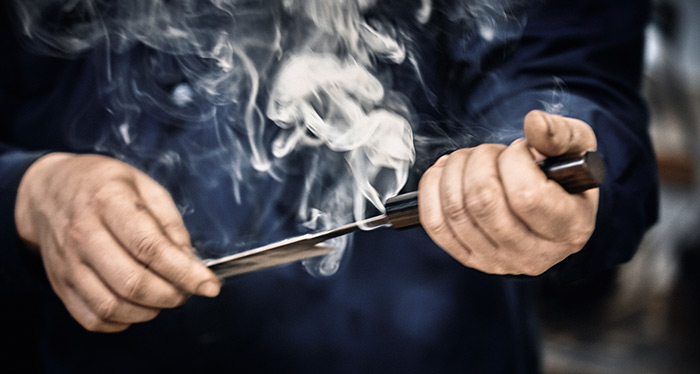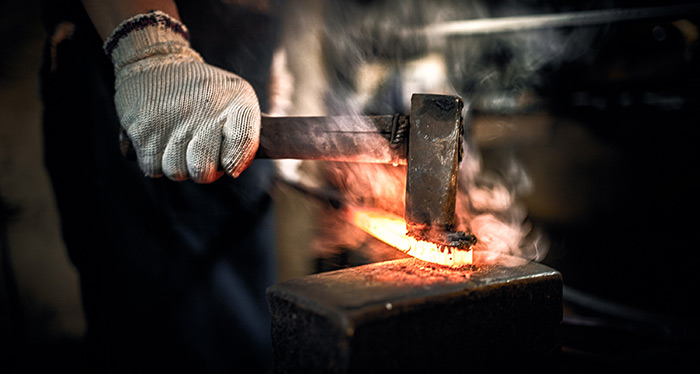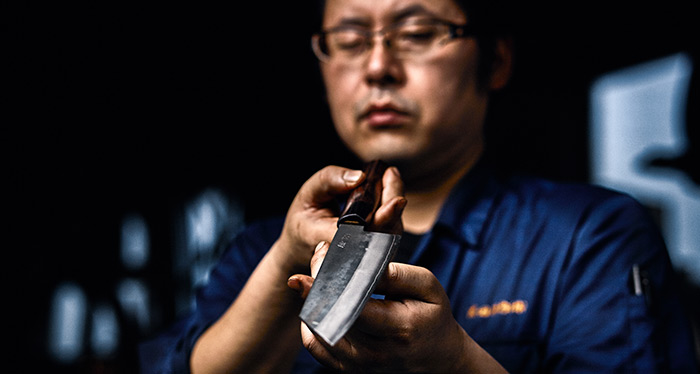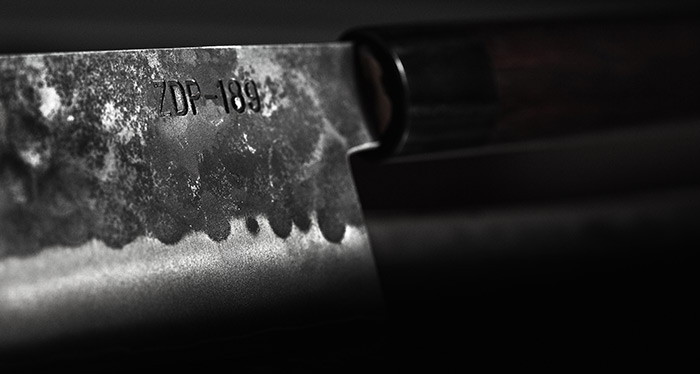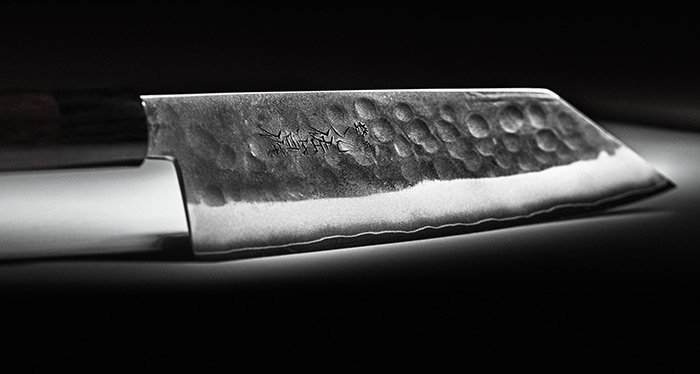ZDP-189
The latest addition to our range is a ZDP-189 kitchen knife that uniquely combines Japanese traditions in the manufacture and maintenance of steel knives with contemporary Western gastronomy.
It embodies the cream of the crop as regards what one desires in a kitchen knife: the best steel, a multi-purpose profile, excellent functionality, and an attractive look. This makes it an ideal choice for anyone looking for a selection of the best properties for versatile use. Its superior qualities will excel in a professional environment with a large volume of work – as well in the home.
We designed the ZDP-189 kitchen knife together with Bine Volčič, one of the most recognisable chefs in Slovenia, in particular due to his comprehensive knowledge of Japanese knives, his passion for working with them, and our previous experience testing knives together. The knife was designed in harmony with our values, i.e. excellence, quality, and reliability, which could be said to originate in the steadfast Japanese tradition. We also devoted special attention to certain aesthetics inspired by Japanese mysticism and a respectful attitude to tradition, nature, raw materials, the constituent elements, and the final product – in short, the quintessential values of Japanese culture.


